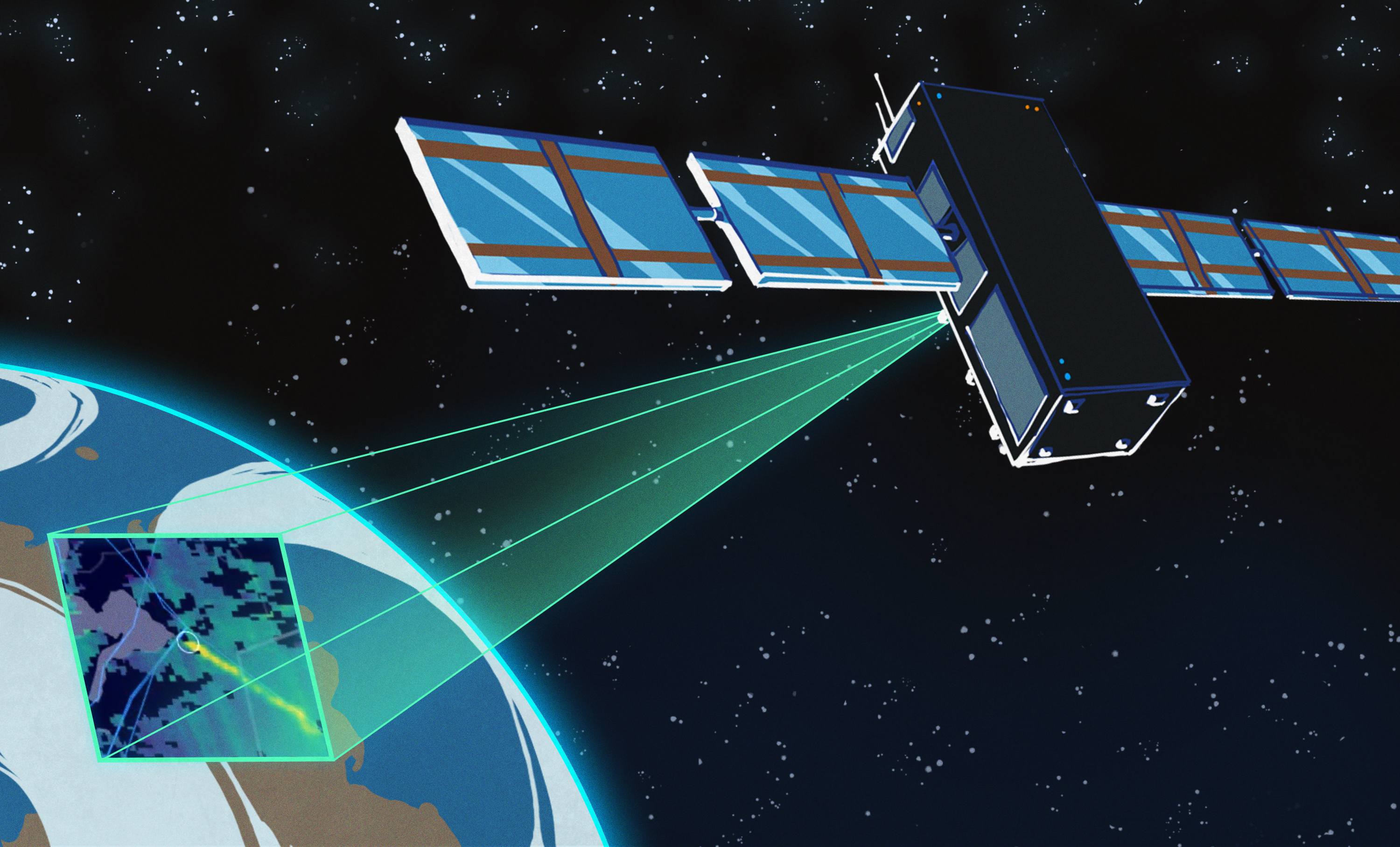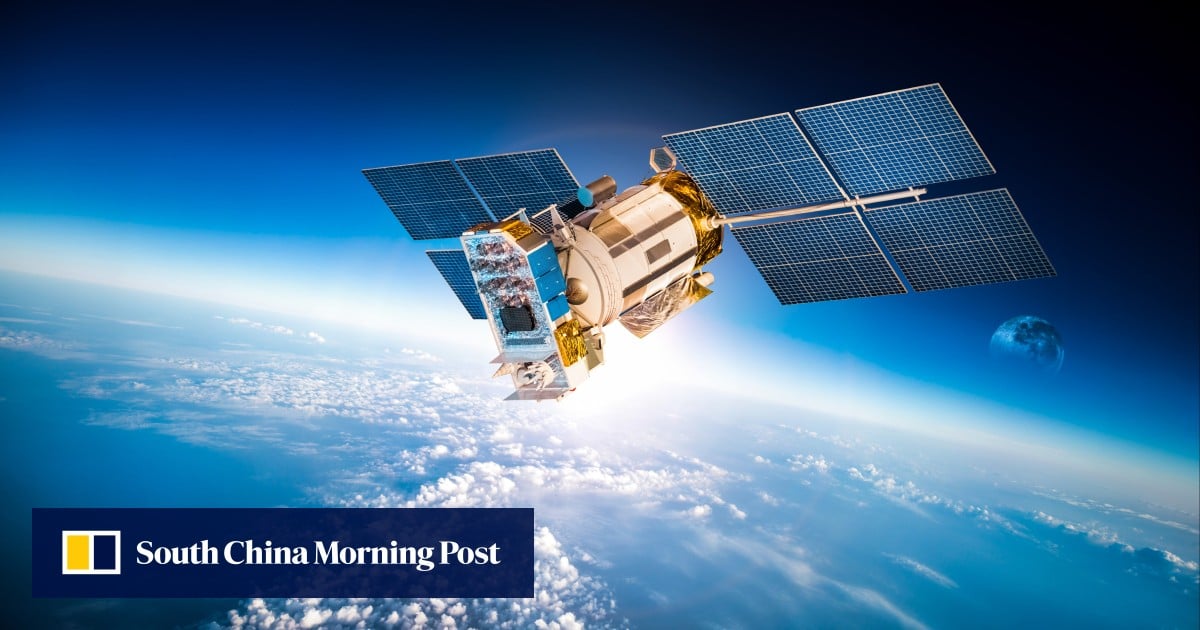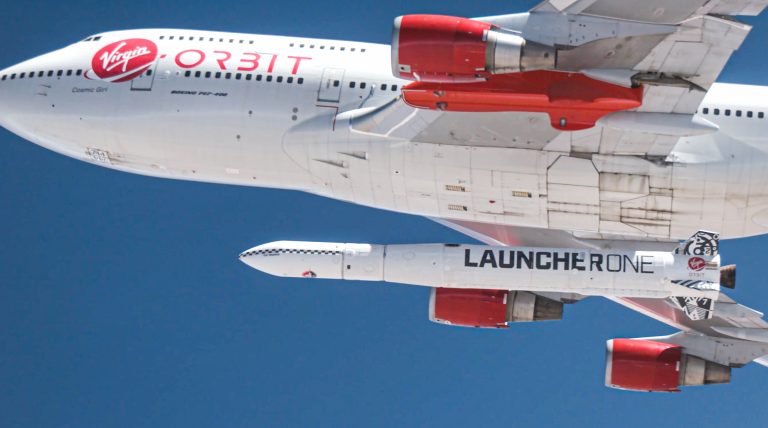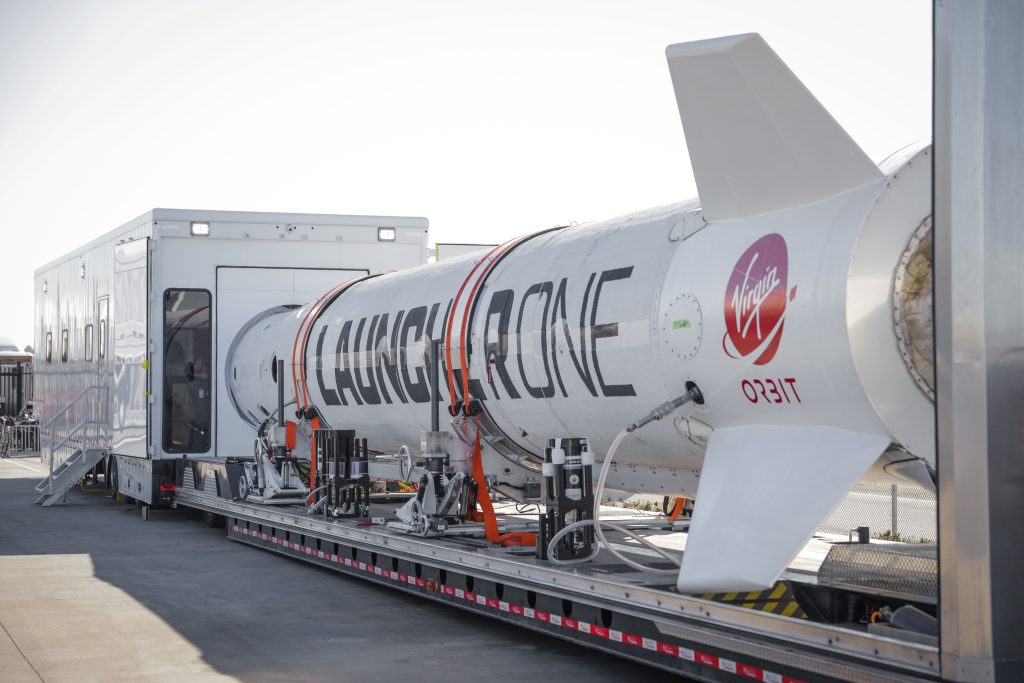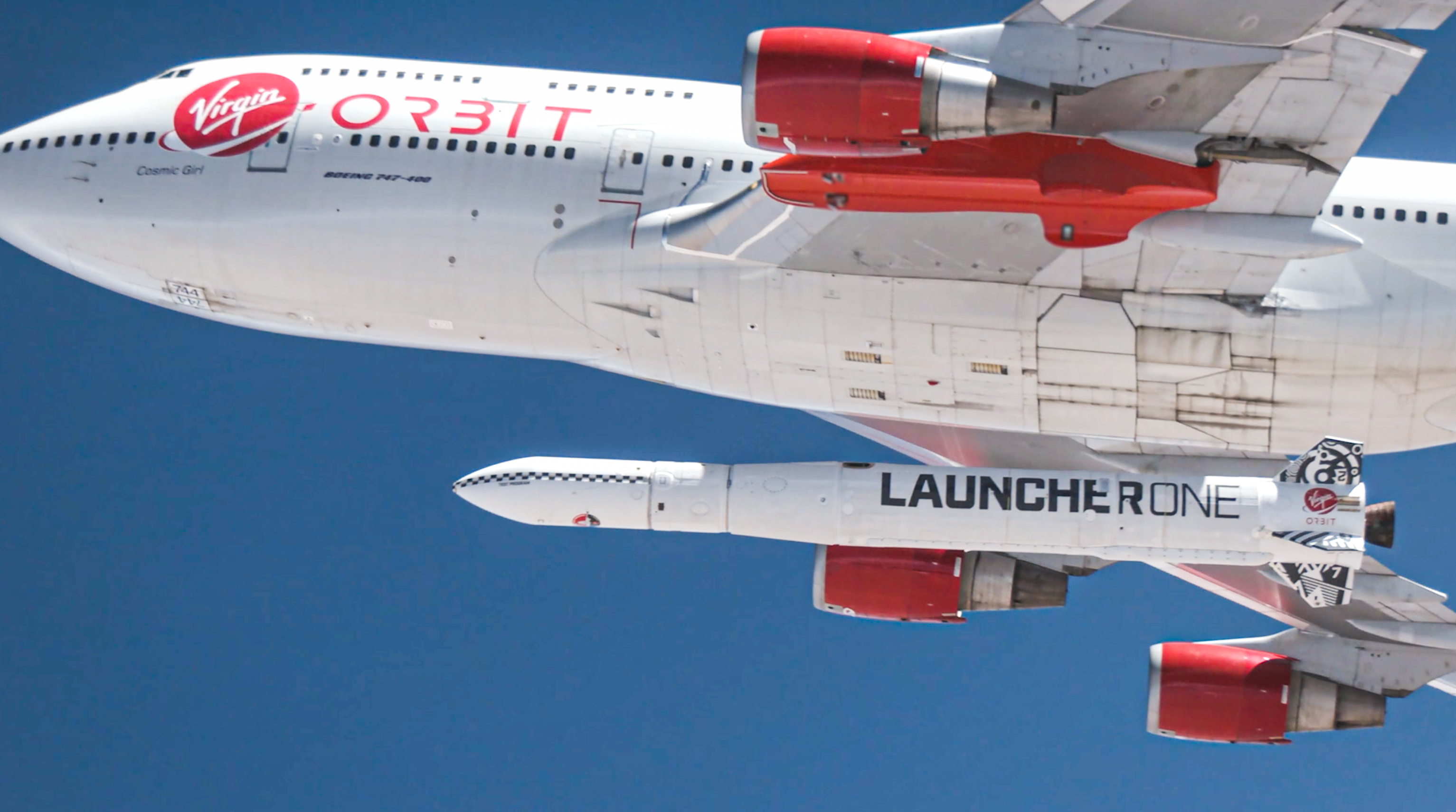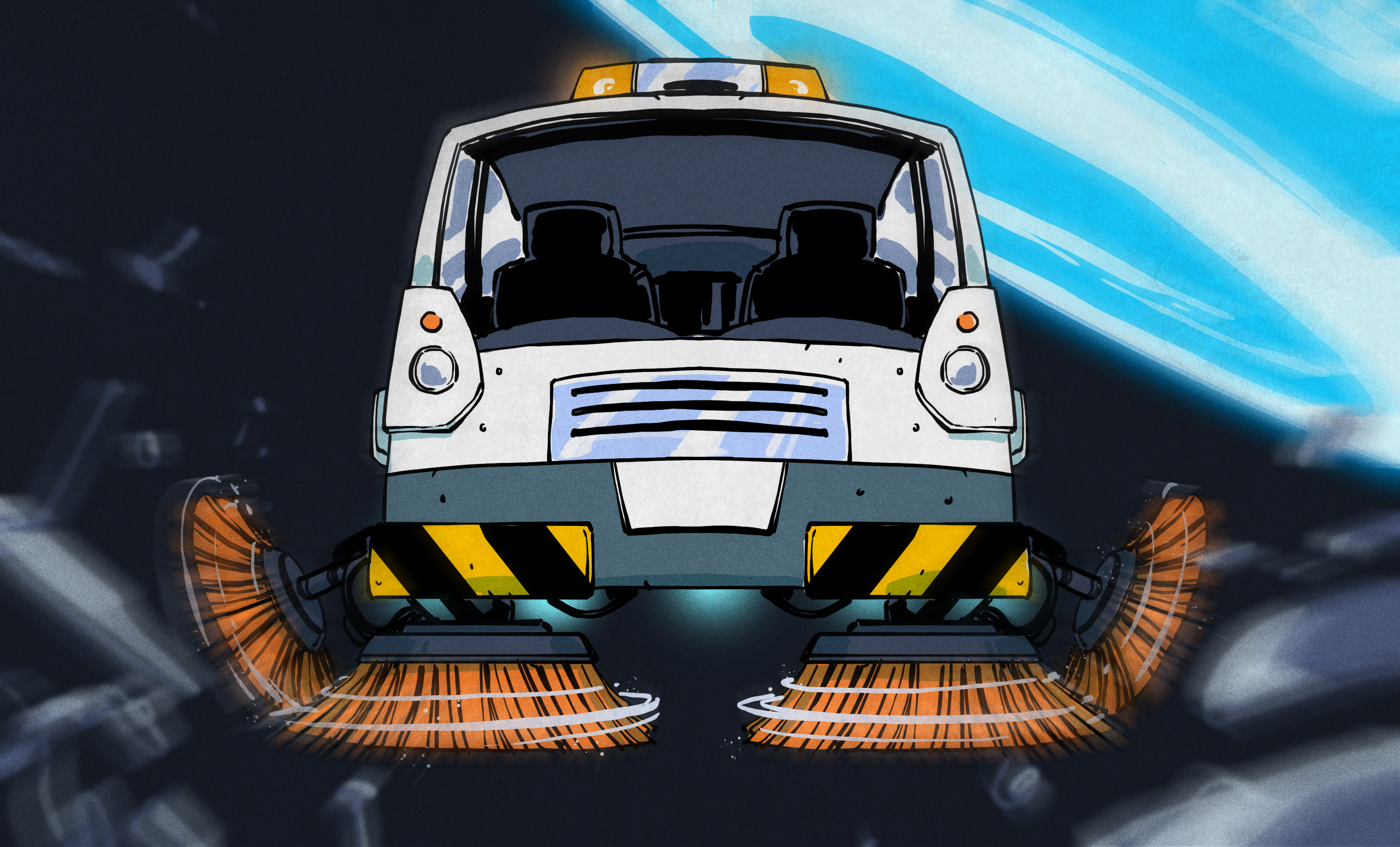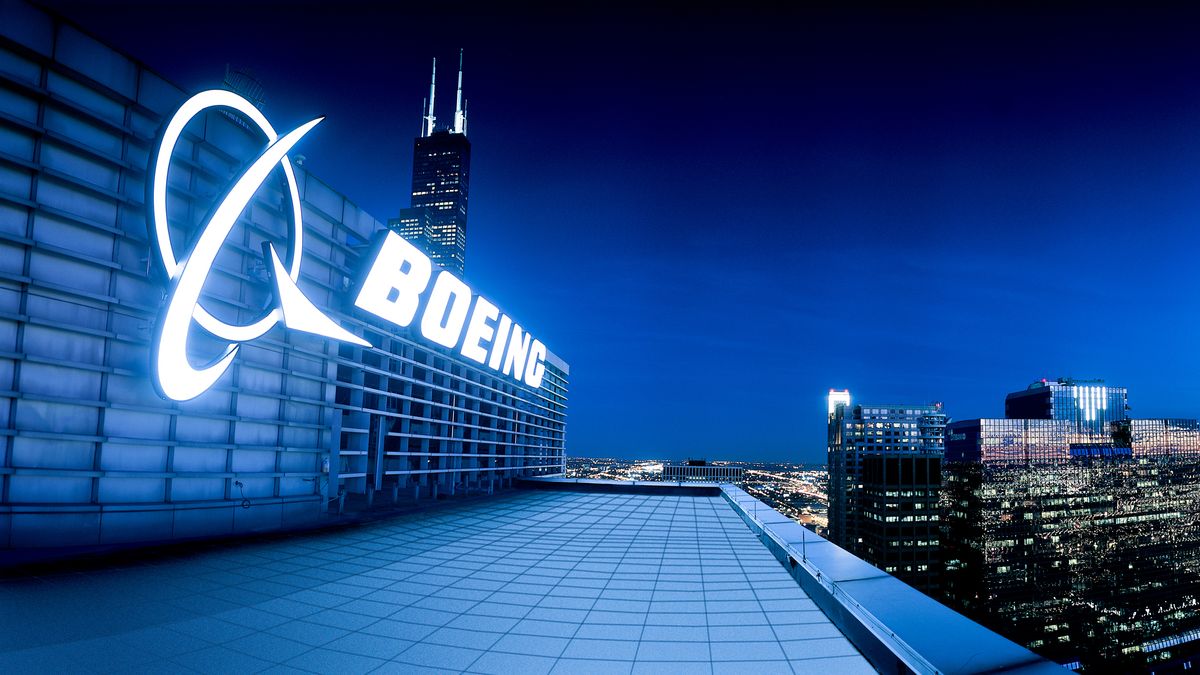3 Likes
#satellites


Seit gestern läuft hier ein LoRaWan-Modul mit TinyGS als System. Noch steht das kleine Ding auf der Fensterbank im Schlafzimmer und lauscht mit einer 1/4 Lambda Gummiwendel gen Osten. Zumindest empfängt es was, aber das ist irgendwie noch suboptimal. Im Drucker befindet sich gerade eine Helixantenne, mit der das Moduls dann nach Draussen kommen soll, Oben auf dem Schuppendach hat es Rundumsicht und somit sollte sich auch der Empfang deutlich verbessern.
Man kann das auch ohne Amateurfunklizenz machen, ist irgendwie spannend und ein leicht umzusetzendes Projekt.
One person like that
1 Shares
https://www.bitchute.com/video/Dge2XqhVdFqv/
#history
#GigiYoung ~A MUST WATCH - #AI Is #Ancient ( #Atlantean #Satellites and the #Dark #Technologies of Our Past
1965 à nos jours : la #France à la #conquête de l' #espace - #ScienceTube

Depuis qu'elle a pris son envol dans l'espace en 1965, la France a joué un rôle crucial dans la #recherche et les #découvertes qui ont profondément changé notre perception de notre #planète. Dans cette conclusion captivante, nous examinerons de près la #contribution de la France à la conquête de l'espace et les bénéfices qu'elle en a tirés.
https://www.youtube.com/watch?v=EXF7jpDhxOY
#science #technologie #spatial #documentaire #terre #mars #satellites #CNES #EADS
One person like that
#China aims to launch nearly 13,000 #satellites to ‘suppress’ Elon #Musk’s #Starlink, researchers say
The Chinese satellites could also be placed in “orbits where the Starlink constellation has not yet reached”, the researchers said, adding that they would “gain opportunities and advantages at other orbital altitudes, and even suppress Starlink”.
The Chinese satellites could be equipped with an anti-Starlink payload to carry out various missions, such as conducting “close-range, long-term #surveillance of Starlink satellites”, they said.
#orbit #technology #news #problem #space #politics #internet #warfare #ElonMusk
4 Likes
3 Comments
1 Shares
One person like that
"Canberra company Skykraft launches satellites onboard SpaceX rocket in bid to improve air traffic management".
"The five satellites, manufactured in Canberra, lifted off from Cape Canaveral Space Force Station in Florida on board a SpaceX Falcon 9 rocket."
"The launch is the first of more than 200 satellites set to orbit the Earth during the next two years as part of a project to make air travel safer, smoother and more efficient."
5 doesn't sound so bad, but whenever I see numbers like 200, my immediate thought is "future space junk".
"So it means that in outback Australia or in the middle of the Pacific Ocean, pilots will have exactly the same access to air traffic control systems as they would if they were close to Canberra Airport."
Looking for how it works, all I found was this:
"To address the limitations of ground-based infrastructure, Skykraft's space-based Air Traffic Management uses the ADS-B signal to track aircraft movements globally. Skykraft's satellite constellation will also provide VHF voice and data communications between air traffic controllers and aircraft."
ADS-B stands for Automatic Dependent Surveillance-Broadcast, and apparently it's a system that uses GPS to determine the aircraft's position and then broadcast that position. It's called "surveillance" because it can act as a replacement for "surveillance" radar from the ground from air traffic control. So it looks like the satellites can pick up these signals and relay them to the ground. VHF just stands for "very high frequency" and can mean anything in the 30 to 300 megahertz (MHz) range.
2 Likes
1 Shares
16 Likes
1 Shares
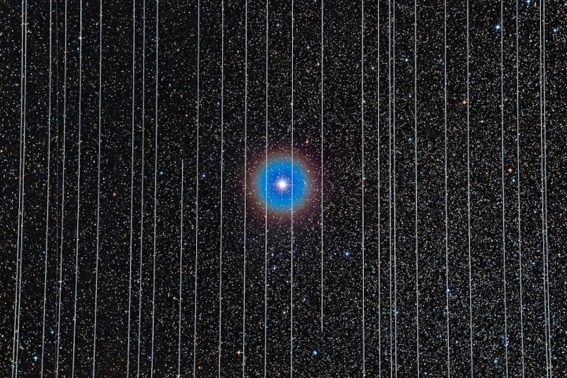
La voûte céleste derrière les barreaux...
100 000 nouveaux satellites vont bientôt gâcher la voie lactée.
La compagnie d’Elon Musk, SpaceX, et l’Européen OneWeb ont déjà lancé en masse ses premiers engins (plus de 3 000 pour le premier), une quinzaine de projets (dont Kuiper systems d’Amazon et le Guowang chinois) devraient leur emboîter le pas.
Des dizaines de milliers de satellites envahiront ainsi le ciel, au grand désarroi des astronomes qui pourraient voir jusqu’à 60 % de leurs clichés inexploitables.Tout ça pour un gain de 0,23 seconde sur internet ?!... 🤨
3 Likes
1 Comments
Never miss another geomagnetic storm. Sign up for Space Weather Alerts and you'll receive a text message when magnetic storms erupt. Aurora tour guides and professional astronomers use this service. You can, too!
QUIET SUN--CONTINUED: For the third day in a row, solar activity is low. The solar disk is peppered with sunspots, but all of them have stable magnetic fields unlikely to explode. NOAA forecasters say there is a 5% chance of M-class flares and no more than a 1% chance of X-flares on Sept. 10th. Solar flare alerts: SMS Text.
SHOULD WE BE CONCERNED ABOUT #BLUEWALKER 3? Later today, SpaceX will launch an unusual satellite: BlueWalker 3. Designed to supply 4G cell phone signals from space, Bluewalker 3 will unfurl a large antenna spanning 64 square meters--the size of a squash court:
This flat surface orbiting 500 kilometers above #Earth will reflect a lot of sunlight, which could make the satellite extremely visible to observers on the ground. It could become #brighter than the #planet #Venus, outshining everything in the night sky except the #Moon.
While this is only a single satellite for now, Bluewalker's maker AST SpaceMobile plans to launch more than 100 larger satellites called BlueBirds. These satellites, which could be more than twice the size of BlueWalker 3, would appear even brighter in the sky.
For astronomers, the satellites could create bright streaks across images from ground-based telescope, potentially making them unusable for observing more distant objects.
Should we be concerned? Maybe. First let's see how bright Bluewalker 3 actually is. It is scheduled to launch from Cape Canaveral on Sept 10th between 9:10 p.m. to 9:20 p.m. EDT. A batch of 34 #Starlink #satellites will share the ride.
One person like that

#Satellites Behind #Pinnacles
#Astronomy #Picture of the Day
12 Likes
Cellphone Task Force newsletter
https://www.cellphonetaskforce.org/wp-content/uploads/2022/05/Update-on-satellites-birds-and-bones.pdf
#satellites #radiation #bones #birds #health
Spinlaunch Throws A Camera Toward Space With Electric Power – Good For Launching Small Satellites

The company’s first suborbital system is designed to test the technology, but Spinlaunch does plan on doing a larger orbital launcher in the future. Neither system can put loads into space on its own, but by propelling the rocket to over 6 times the speed of sound at launch, the need for a big rocket that burns vast quantities of fuel is eliminated. Instead, a Spinlaunch rocket can be quite small and still take its payload to space. This will lower both the monetary cost and the environmental costs of launching small spacecraft (like satellites) into space.
Yes, normal rocket launching can be pretty bad for the environment, and expensive, so this may fill an important niche going forward.
See https://cleantechnica.com/2022/05/20/spinlaunch-throws-a-camera-toward-space-with-electric-power/
#technology #environment #spinlaunch #satellites
#Blog, ##environment, ##satellites, ##spinlaunch, ##technology
2 Likes
10 Comments
Spaceport Cornwall to host UK's first satellite launch this summer
Spaceport Cornwall to host UK’s first satellite launch this summer
The UK Government has announced the first UK satellite launch, to take place this summer, with “Prometheus-2” taking off from Spaceport Cornwall, in Newquay.
Spaceport Cornwall to host UK's first satellite launch this summer
The Defence Procurement Minister, Jeremy Quin, has announced two Cubesats will be carried on Virgin Orbit’s Launcher One rocket (pictured), taking off horizontally from a modified Boeing 747 jet, named Cosmic Girl. The mission will enable the UK Ministry of Defence (MOD) to identify new techniques and algorithms for operating satellites and data processing.
“We are putting the UK at the forefront of small satellite launch, providing world-leading capability for commercial customers and governments within a global market, opening new opportunities and inspiring the current and next generation of British space scientists, engineers and entrepreneurs,” said Deputy CEO at the UK Space Agency, Ian Annett. These satellites showcase the UK’s strengths in designing and building satellites. Being able to launch from the UK and across Europe for the first time will boost our satellite industry further, create high skilled jobs across the country and deliver a key ambition of the National Space Strategy.”Spaceport Cornwall to host UK's first satellite launch this summer
The Defence Procurement Minister, Jeremy Quin, has announced two Cubesats will be carried on Virgin Orbit’s Launcher One rocket (pictured), taking off horizontally from a modified Boeing 747 jet, named Cosmic Girl. The mission will enable the UK Ministry of Defence (MOD) to identify new techniques and algorithms for operating satellites and data processing.
“We are putting the UK at the forefront of small satellite launch, providing world-leading capability for commercial customers and governments within a global market, opening new opportunities and inspiring the current and next generation of British space scientists, engineers and entrepreneurs,” said Deputy CEO at the UK Space Agency, Ian Annett. These satellites showcase the UK’s strengths in designing and building satellites. Being able to launch from the UK and across Europe for the first time will boost our satellite industry further, create high skilled jobs across the country and deliver a key ambition of the National Space Strategy.”Prometheus-2
Built by In-Space Missions, which is based in Hampshire, and designed with Airbus Defence and Space, Prometheus-2 is described as a collaboration between the MOD and international partners, including the US National Reconnaissance Office (NRO).
The two shoebox-sized satellites will provide a test platform for monitoring radio signals including GPS and sophisticated imaging, paving the way for a more collaborative and connected space communication system with our allies.
“This is a great example of the power of international collaboration – a key tenet of our Defence Space Strategy,” said Director Space at MOD, Air Vice Marshal Harv Smyth. “Prometheus 2 will deliver immense value to the UK MOD’s future space programme and, thanks to our partners in the National Reconnaissance Office, this highly-capable satellite will launch from UK soil this summer. I am hugely proud of what we have achieved together and this is just the beginning.”No exact launch date has yet been announced.
CubesatsThe Cubesats will operate in low Earth Orbit, around 550km above the Earth and 50-100km apart at 17,000mph.
Cubesat 1 includes a hyperspectral imager, a laser detector and a GPS receiver. The hyperspectral imager will capture multiple slivers of pictures over different wavelengths of light for higher definition images. The GPS receiver confirms the precise time and position of the satellite over the area of the Earth to be photographed.
Cubesat 2 includes two optical imaging cameras, a laser range finder, and a GPS receiver. One camera will be fitted with a wide-angle lens for a 180-degree view of Earth’s surface with the second camera observing the other Cubesat 1 to support space situational awareness and enables us to understand what else orbits the Earth.
The plan is to “test novel concepts as a pathfinder” in support of the Minerva constellation for space-based intelligence and surveillance, this will be via the UK’s Defence Science and Technology Laboratory (Dstl) Hermes ground-station based in Portsmouth.
“The Prometheus-2 mission, with the first ever directly owned Dstl satellites, exemplifies the decades-long collaborative relationship with our international allies, and shows how we can best partner with industry, said Dstl’s Chief Executive, Paul Hollinshead. “It will achieve critical R&D outcomes and help increase our pool of qualified space personnel to help grow the UK’s capability to deliver space systems in the future.”UK horizontal launches
Cornwall is not the only UK site looking to support such horizontal launches, as provided by Virgin Orbit. We reported recently on Prestwick Spaceport’s progress towards horizontal launches in 2023, for smaller satellites such as CubeSats.
For these launches the payload is launched by rocket mid-air from an aircraft – at a suitable altitude over a body of water – which in turn means traditional airport infrastructure can be used. The launches are also less vulnerable to adverse conditions.
One person like that
1 Shares
La #Russie s'en prend aux #projets #spatiaux #américains sur #Mars et la #Lune
Россия ударила по космическим проектам США на Марсе и Луне
La Russie se retire du projet #ISS. Les États-Unis ne sont techniquement pas prêts à maintenir la station en orbite pendant près de 10 ans de plus, puis à l'amérrire dans l'océan sans conséquences.
La Russie a décidé de se retirer du projet ISS
Le chef de #Roskosmos, Dmitri #Rogozine , a déclaré samedi que la décision sur la date de fin des travaux de la Russie sur la #Station #spatiale #internationale (ISS) avait déjà été prise par le gouvernement.
"La décision est déjà prise. Nous ne sommes pas obligés d'en parler publiquement. Je ne peux dire qu'une chose : conformément à nos obligations, nous préviendrons nos partenaires un an avant la fin des travaux sur l'ISS", a déclaré Rogozine. dans une interview avec la chaîne de télévision Russie 24.
Cela se produira très probablement en 2024 - c'est avant cette année que la Fédération de Russie se dégagera du projet ISS, bien que l'agence spatiale américaine (NASA) ait demandé une coopération jusqu'en 2030.
Les sanctions ne laissent aucune chance à la coopération dans l'espace
En raison des sanctions américaines. Roskosmos s'est plaint que les autorités américaines fassent pression sur la NASA dans le cadre de sanctions sur l'exportation vers la Russie de produits "sensibles" pour les industries de la défense, de l'aérospatiale et de la construction navale.
Rogozine a averti que si, en raison du manque de pièces nécessaires, le service de l'ISS était menacé, la station pourrait tomber sur le territoire des #États-Unis, de l' #Europe, de l' #Inde ou de la #Chine.
Cependant, la plupart des analystes occidentaux ont considéré les menaces du chef de Roskosmos comme une #fanfaronnade politique. Et ils ont continué à sanctionner la société. Ainsi, des "partenaires" européens ont mis à mal le programme scientifique russe de l'observatoire spatial #Spektr-RG en éteignant l'un de ses deux télescopes.
Avec les sanctions actuelles, Roskosmos n'a plus aucun argument pour poursuivre sa coopération avec l' #Occident. La société d'État a déjà annulé plusieurs projets spatiaux internationaux (lancements depuis le cosmodrome de Kourou, lancements de tous les #satellites #OneWeb, etc.) et cessé de vendre des moteurs de fusée russes #RD-181 à des entreprises américaines.
Il n'y a pas de remplacement pour "#Progrès"
La partie américaine fournit l'énergie et le soutien vital de l'ISS, la Russie est responsable du déplacement et de la maintenance de la station en orbite à l'aide des navires de transport Progress. Ils donnent périodiquement une impulsion à la station pour maintenir son altitude à environ 400 km.
Le retrait de la Russie du projet pourrait signifier que la NASA maintiendra techniquement l'ISS en orbite et devra ensuite faire amérrir la station en toute sécurité.
Le rédacteur en chef de la NASA Watch, Keith #Cowing , a déclaré à Live Science que l'agence testerait bientôt la possibilité de maintenir l'ISS en orbite en utilisant les moteurs du vaisseau spatial cargo #Cygnus, qui est fabriqué et lancé par une société aérospatiale américaine. #Northrop #Grumman.
"Donc, ce n'est plus une menace aussi importante qu'avant", a-t-il déclaré.
Cowing pense que la NASA et ses autres partenaires pourront maintenir l'ISS en orbite même si la Russie se retire du projet. Le #Guardian a rapporté que le cargo Cygnus, arrivé à l'ISS le 21 février, a pu pour la première fois "redémarrer" la station sans l'aide de la Russie.
Cependant, en février, la NASA et les agences partenaires n'avaient pas encore signé d'accord pour traduire les expériences en réalité. Et dans un rapport de 2022, les responsables de la NASA ont noté que trois vaisseaux spatiaux Progress seraient nécessaires pour désorbiter la station, le vaisseau spatial Cygnus de Northrop Grumman n'étant testé qu'en tant qu'assistant.
La NASA ne sait pas comment couler en toute sécurité des stations dans l'océan
L'amérissage de l'ISS aux mains des Américains semble également problématique. L'expérience précédente en 1979 avait échoué. La station #Skylab, pesant 77 tonnes, est tombée hors de son orbite en mode incontrôlé, car la navette était en retard pour l'impulsion nécessaire. En conséquence, le vaisseau spatial, après avoir traversé l'atmosphère, est tombé dans de gros débris en Australie, et non dans l'océan.
L'ISS a une masse de 400 tonnes. Plus un objet est grand, moins il est probable que l'atmosphère puisse le brûler complètement. Comme l'a dit #Spaice.com Spécialiste de Harvard Jonathan #McDowell, la station sera très difficile à orienter correctement à cause des immenses panneaux solaires.
Il a comparé les conséquences possibles d'une descente incontrôlée avec un accident d'avion dans une zone peuplée.
Sans expériences sur l'ISS, les vols vers la Lune et Mars sont impossibles
La NASA a besoin de l'ISS pour mener à bien les recherches en #microgravité nécessaires aux missions vers la Lune et Mars. Plusieurs experts en politique spatiale ont déclaré à #Recode que "le pire cauchemar de l'agence spatiale américaine est de ne pas avoir sa propre station spatiale pour terminer ce travail".
Roskosmos prévoit de lancer une nouvelle station spatiale nationale d'une valeur de 5 milliards de dollars d'ici 2030 et parie sur des projets spatiaux avec la Chine, qui, soit dit en passant, a été interdite par les Américains de participer à l'ISS. La Russie et la Chine ont convenu de coopérer dans l'exploration lunaire, y compris la construction de la Station scientifique lunaire internationale.
Lire sur le sujet :
L' ESA a arrêté sa coopération avec Roscosmos - la NASA est plus importante pour eux
L'ISS tombera "sur vos têtes" - Rogozine a averti les États-Unis
Pourquoi les États-Unis aimeraient travailler avec la Russie dans l'espace, mais la Russie ne le fait pas
https://www.pravda.ru/science/1704252-mks_roscosmos/

#guerre #ukraine #russie #StationScientifiqueLunaireInternationale
#politique #société #dictature #fascisme #censure #manipulation #démocratie #oligarchie#questionner #comprendre #agir
#revolution #MondeDAprès #résistance #complot #complotisme #capitalisme #escroquerie #corruption #terrorisme #exclus
4 Comments
Saint-Senier-de-Beuvron fait plier le milliardaire Elon Musk !
Après plus d'un an de bataille, les élus et les 368 habitants du village de #Saint-Senier-de-Beuvron ont réussi à empêcher l'installation d'antennes satellites, voulues par le géant américain #SpaceX d #ElonMusk.
https://france3-regions.francetvinfo.fr/normandie/manche/avranches/saint-senier-de-beuvron-fait-plier-le-milliardaire-elon-musk-et-son-projet-starlink-2431075.html
#Starlink #bonne-nouvelle #BonneNouvelle #Bretagne #Manche #internet #Satellites
3 Likes
1 Comments
1 Shares
In race to provide internet from space, companies ask FCC for about 38,000 new broadband satellites
https://www.cnbc.com/2021/11/05/space-companies-ask-fcc-to-approve-38000-broadband-satellites.html
3 Likes
1 Comments
And Boeing Too!!! Jeeze…this is getting ridiculous! How man satellite internet providers do we need??
https://www.space.com/boeing-satellite-constellation-fcc-approval
4 Likes
3 Comments
